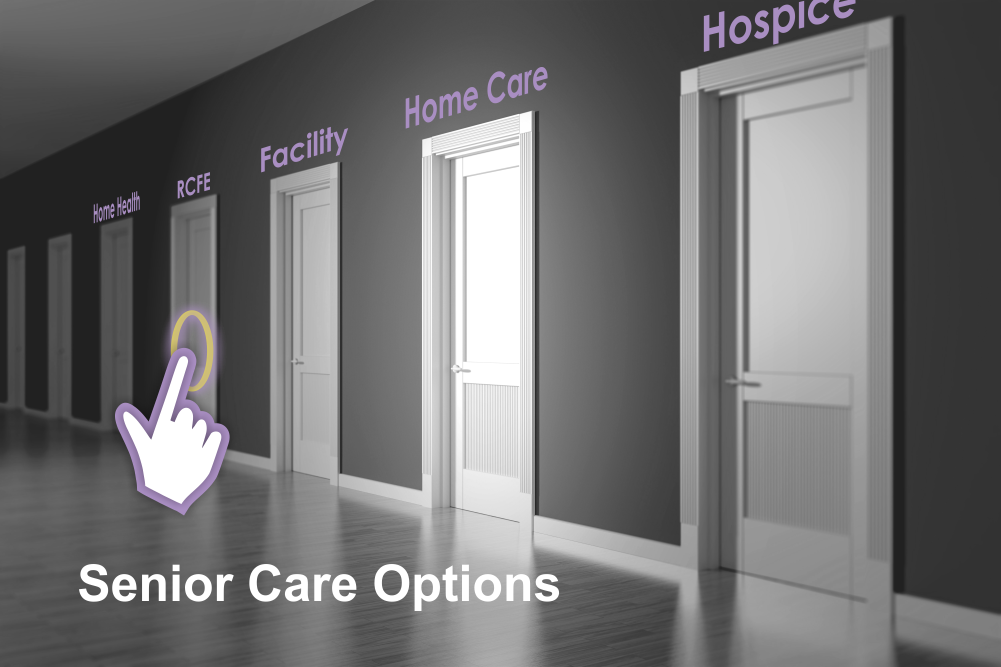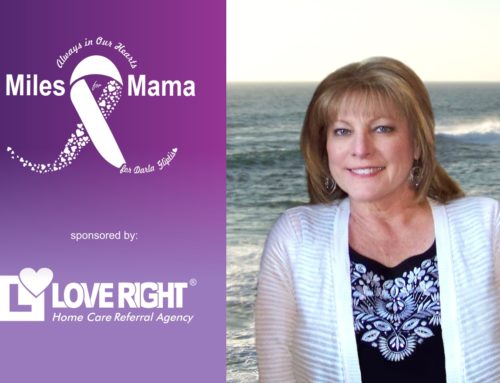Senior Care – Scenario #1
Susan* has been the primary caregiver for her husband, Charles*, who lives with Dementia. He has been living with the condition for several years and is declining. Susan is his primary caregiver but is finding it more and more difficult to meet Charles’ needs as his condition continues to deteriorate. Susan and her family are now finding themselves at a crossroads. As Charles continues to decline, they must decide on a care plan for him that will meet his needs and prevent Susan from experiencing the ever so common “caregiver burnout.”
Senior Care – Scenario #2
On the other end of town, Nancy*, a vibrant and active senior who was still driving and participating in church and community events, has unexpectedly suffered a stroke. She is now aphasic, non-ambulatory, and experiencing confusion. Her family is finding themselves in the unexpected position of figuring out a care plan for her.
Decisions
Whether the need for care is the result of gradual deterioration due to a degenerative disease or if it is an incident-driven need, as in the case of Nancy, many times family members suddenly find themselves needing to make difficult and emotional decisions pertaining to care. Terms such as nursing home, convalescent home, board & care, assisted living, respite care, hospice care, palliative care, in-home health, in-home supportive services, and in-home care start to be presented, and oftentimes, families are unsure how to navigate the sea of choices when they don’t know what they each mean.
Facility Care
Nursing facility, skilled nursing facility, nursing home, and convalescent home are all interchangeable terms referring to the same type of care. In this type of setting, patients requiring 24-hour nursing care due to a medical need, such as wound care or tracheotomy care, will receive said services. Patients who have been prescribed inpatient physical, occupational, or speech therapy are also going to receive services in this type of facility. Typically, insurance carriers cover a limited number of days per year for therapy or convalescent services. Patients on Medi-Cal who need long-term nursing care may also reside in this setting permanently, though beds can be tough to come by.
“In any moment of decision, the best thing you can do is the right thing. The worst thing you can do is nothing.”
~
“The most difficult thing is the decision to act, the rest is merely tenacity. The fears are paper tigers. You can do anything you decide to do. You can act to change and control your life; and the procedure, the process is its own reward.”
~Amelia Earhart
In-Home Care
In-home health, in-home supportive services, and in-home care are not interchangeable terms. In-home health refers to ongoing outpatient nursing or therapy services that are provided at the patient’s home. These services are covered by insurance. In-home supportive services refer to non-medical care and supervision provided by a caregiver at the patient’s home for a limited number of hours per month, depending on what Medi-Cal approves. In-home care services are private organizations that provide non-medical care (some with supervision, some with independent providers), and they are an out-of-pocket expense to the patient.
Community Care Setting
Board and Care homes and Assisted Living communities are a less expensive alternative to 24-hour in-home care. These settings provide around-the-clock care and supervision to seniors needing daily assistance with non-medical needs, such as medication management, dressing, grooming, bathing, and toileting. The difference between the two is primarily size. Board & Care homes typically cater to 6 residents, whereas Assisted Living communities are much larger. For residents with higher care needs, Board & Care homes tend to be a more popular choice, as there are typically 1 to 2 caregivers on site to care for the needs of 6 residents, whereas Assisted Living communities usually have a ratio of 1:12 to 1:15 caregivers to residents. Assisted Living communities are a great option for active seniors who want to participate in social or educational activities. Many communities also offer specialty neighborhoods specifically for persons with Dementia. There are even communities that solely specialize in Memory Care. Board & Care homes and Assisted Living communities are not covered through insurance providers such as MediCare or Medi-Cal. However, long-term care insurance policies do cover these types of care settings.
What about respite care?
Respite care is provided by most Board & Care homes and Assisted Living communities for seniors that may just need a temporary stay due to a recent injury wherein they would benefit from continued care to recuperate. Respite care is also an option if a family member who is also a primary caregiver is planning to take a vacation and needs temporary care for their loved one while they are gone.
Hospice Care
Hospice services are paid for by insurance and can either be provided for persons residing at their own home or in a Board and Care or Assisted Living community. These services are available for terminally ill patients to ensure that they are comfortable through end of life. Usually, a person must have a prognosis of less than 6 months, but some have been on hospice for longer depending on their continued needs. A person receiving hospice care services is typically not receiving continued treatment for their diagnosis. For example, a person with cancer is not going to be receiving ongoing chemo or radiation treatments if they are on hospice. Palliative care, on the other hand, can be provided in conjunction with ongoing treatments. The goal of Palliative Care is much the same as Hospice care, wherein the goal is to help alleviate discomfort and negative side effects. However, patients are often not at a terminal stage as treatments for their illness are still ongoing.
Senior Care Options – Conclusion
Regardless of what choice is best for a person needing assistance as a result of an incident-driven event or an ongoing degenerative condition, there are experts in each organization who are able to answer questions and help families or friends decide what options are best for each individual. Should Assisted Living or Board & Care be the right choice for you, Quality Placement Companies provide placement coordination services for families. It should be a free service dedicated to finding the right fit for each person’s specific needs, and experienced Advisers should be available to answer your questions and assist you in your search.
*Names have been changed to protect privacy.
If you or someone you care about needs help figuring out available care-options. Ask for help from family first. If family lives too far or works too often, call us to schedule a No Obligation CAREConsult™ with a Love Right™ Care Service Representative. You’re in luck because we are connected with San Diego’s best resources to find you what you need.











Leave A Comment